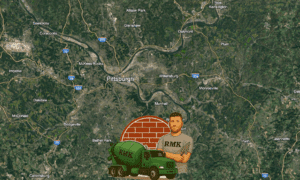Have you ever been mesmerized by the beauty of a stormy sky, with dark clouds rolling in and thunder rumbling in the distance? While these powerful displays of nature can captivate us, it’s important to remember that severe weather events have far-reaching consequences beyond their visual appeal. From destructive tornadoes to relentless hurricanes, our world is no stranger to the devastating effects of Mother Nature’s wrath. In this blog post, we will delve into the heart-wrenching realities of severe weather and shed light on how it impacts lives and communities across the globe. Get ready to join us on a journey through stormy skies as we explore the raw power and frightening aftermath of these natural phenomena.
Introduction: Defining Severe Weather and its Causes
Severe weather can be defined as any type of hazardous meteorological event that poses a threat to human life or property. This can include events such as tornadoes, hurricanes, flash floods, and severe thunderstorms. While severe weather can occur anywhere in the world, it is most common in areas where the atmosphere is unstable, such as along cold fronts and within thunderstorm cells.
The main cause of severe weather is atmospheric instability. This occurs when there is a large difference in temperature between different layers of the atmosphere. When this happens, the air becomes unstable and rises rapidly, leading to the formation of cumulonimbus clouds (thunderstorms). These thunderstorms can produce strong winds, heavy rain, hail, and even tornadoes.
The Impact of Cloudy Weather on the Environment
While the sun is an important part of the Earth’s climate and weather patterns, it also plays a significant role in the health of our planet. The sun’s ultraviolet (UV) radiation helps to break down pollutants in the atmosphere, such as ozone and smog. Additionally, UV rays help trigger chemical reactions that cleanse the air and water.
When severe weather moves in and clouds block out the sun, these cleansing processes are hindered. As a result, air and water quality can suffer. In addition, plant growth may be stunted due to a lack of sunlight.
Cloudy weather can also have an impact on human health. Without sunlight, our bodies cannot produce vitamin D. This essential vitamin helps to build strong bones and teeth and aids in calcium absorption. Vitamin D deficiency has been linked to several health problems, such as osteoporosis, heart disease, cancer, and diabetes.
So next time you’re complaining about being stuck indoors on a cloudy day, remember that there is more at stake than just your tan. Stormy skies can have a serious impact on our environment and our health.
Economic Implications of Severe Weather
The severe weather that rocked the Midwest and South this week was a stark reminder of the devastation that can be wrought by these types of storms. The economic implications of such weather events are far-reaching and can be extremely costly for both businesses and consumers.
In the wake of a severe storm, businesses often suffer significant damage to their property and inventory. This can lead to lost revenue and higher costs associated with repairs and replacements. For consumers, severe weather can mean higher prices for goods and services, as well as increased costs for things like home repairs and travel.
In addition to the direct costs associated with severe weather, there are also indirect costs that can have a major impact on the economy. These include things like power outages, which can lead to lost productivity and increased business expenses. In some cases, severe weather can also lead to job losses as businesses are forced to close their doors temporarily or permanently.
All of these factors underscore the importance of preparing for severe weather before it strikes. By taking steps to protect your property and minimize the impact of storms, you can help reduce the economic devastation that they cause.
Health Impacts of Stormy Skies
While the beauty of a severe thunderstorm can be awe-inspiring, the reality is that these types of storms can have devastating effects on both our physical and mental health. The physical impacts of severe weather include injuries from high winds and flying debris, flooding, electrocution, and even tornadoes. These events can also lead to mental health issues like anxiety, depression, and post-traumatic stress disorder (PTSD).
In addition to the direct impacts of severe weather, there are also indirect health effects that can occur. For example, power outages can lead to food spoilage and a lack of access to medical care. Additionally, extreme heat or cold can exacerbate existing health conditions like asthma or heart disease.
The best way to protect yourself from the health impacts of severe weather is to be prepared. Know your area’s evacuation routes and have a plan in place in case you need to leave your home. Make sure you have an emergency kit stocked with supplies like food, water, and first-aid supplies. Stay tuned to local weather reports so you know when a storm is heading your way.
Humanitarian Crisis Caused by Severe Weather Events
In 2017, natural disasters killed nearly 3,000 people and caused over $306 billion in damage worldwide. Of these events, tornadoes were responsible for only 11 deaths. Severe other weather events like hurricanes, floods, were also responsible for the vast majority of deaths and destruction.
While the United States is no stranger to severe weather, 2017 was a particularly active year for storms. Hurricane Harvey dumped more than 60 inches of rain on parts of Texas and Louisiana, causing widespread flooding that damaged or destroyed over 200,000 homes. Just weeks later, Hurricane Irma pummeled Florida with high winds and a storm surge, leaving billions of dollars in damage in its wake.
These storms are only two examples of the devastation caused by severe weather around the world. In Bangladesh, monsoon rains triggered massive flooding that affected millions of people. Mozambique was hit by two powerful cyclones that left hundreds dead and tens of thousands homeless. In Nepal, flash floods and landslides killed more than 160 people.
As extreme weather becomes more common due to climate change, the number of people impacted by these events will only continue to rise. According to the United Nations Office for Disaster Risk Reduction (UNISDR), as many as 375 million people could be displaced by 2050 due to extreme weather events like floods and hurricanes.
This growing humanitarian crisis is one that we must begin to prepare for now. With so many people at risk of being killed or made homeless by severe weather events, we must work to reduce the risks and mitigate the impacts of these disasters. This will involve investments in infrastructure, improved early warning systems, and better preparedness plans before tragedy strikes.
Solutions to Help Minimize the Devastating Effects of Severe Weather
When severe weather hits, the damage can be widespread and devastating. According to the Federal Emergency Management Agency (FEMA), from 2005 to 2015, there were an average of 10 fatalities and $1.5 billion in property damage per year due to severe weather events in the United States.
There are some things that you can do to help minimize the effects of severe weather. First, it is important to have a plan in place. This should include an emergency kit with supplies like food, water, and first-aid supplies. You should also know your area’s evacuation routes in case you need to leave your home quickly.
Another way to help reduce the effects of severe weather is by preparing your home. This includes making sure your roof is in good condition and trimming trees around your property. Severe weather can cause power outages, so it is also a good idea to have backup power sources like generators or solar panels.
If you are caught in a severe weather event, there are some things you can do to stay safe. If possible, go to an interior room on the lowest level of your home or building. Stay away from windows and doors, and cover yourself with blankets or pillows for protection from flying debris. If you are driving, pull over and park away from trees or power lines. Finally, if you see a tornado approaching, get into a vehicle and drive away perpendicular to the tornado’s path.
Conclusion
Severe weather can be devastating for communities and individuals alike, as we have explored in this article. We hope that by shedding light on the various effects of severe weather, we have helped to raise awareness about the importance of being prepared and having contingencies in place should a stormy sky come your way. With climate change already making its mark across the planet, it’s important to stay informed about the latest developments in severe weather so that you can protect yourself and those you love when things turn sour.

































